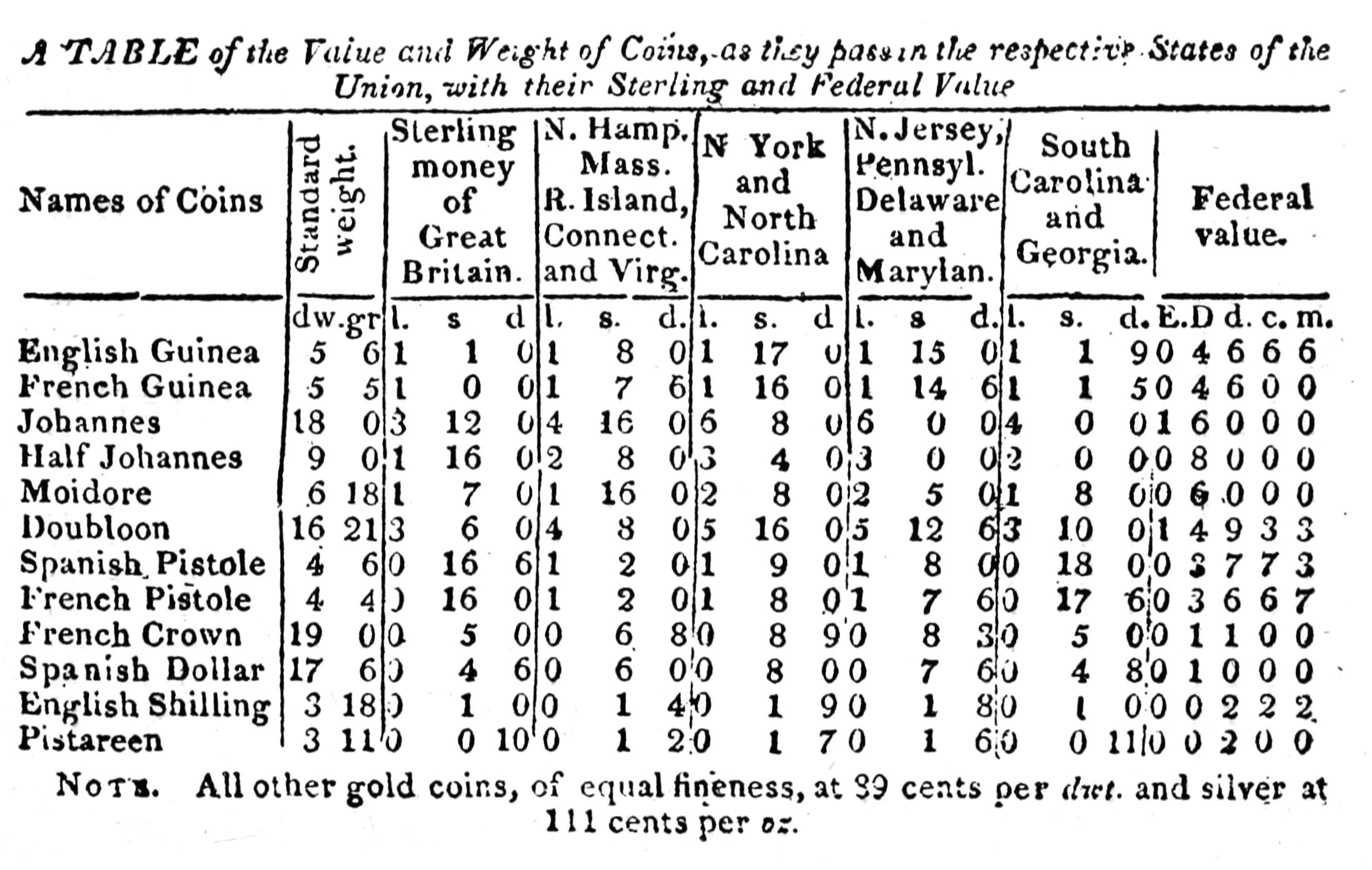If you read the literature of the young United States, you have doubtless been puzzled when the subject of money comes up. Shillings, eagles, dollars, half-johanneses, dimes, pistareens—they all seem to mingle indiscriminately in everyone’s purse. Money seems to be a very complicated subject.
In fact it was more complicated than you probably imagined. The federal government had its currency in dollars (ten dollars made an eagle), but the states had their own coinage in pounds, shillings, and pence, and the values were different from state to state. There were four different systems of values among the original thirteen states two hundred years ago. (State coins in pounds, shillings, and pence were no longer issued after 1793, but they remained in circulation for decades after that.) Furthermore, much of the money in circulation at the time was foreign: the Spanish milled dollar was the basis of the American dollar, and British, French, Spanish, and Portuguese coins all jingled in an American purse.
Fortunately we have this chart, published in Pittsburgh exactly two hundred years ago, that compares the values of the various coins an American might use.
The values for state coinage are given in pounds, shillings, and pence; the values for federal coinage are given in eagles, dollars, dimes, cents, and tenths of cents.
The same book explains at length how to convert the coinage of one state to another’s—an explanation that takes up two pages: “To reduce Pennsylvania, New Jersey, Delaware and Maryland, into New Hampshire, Massachusetts, Rhode Island, Connecticut and Virginia, from the sum given deduct 1/5 thereof. Into New York and North Carolina, to the sum given add 1/15 thereof. Into South Carolina and Georgia, multiply by 3 and 1/9, and divide the product by 5, or multiply by 28, and divide by 45.” And so on.
On the whole, it is probably a good thing that the states no longer claim the power to coin their own money.
